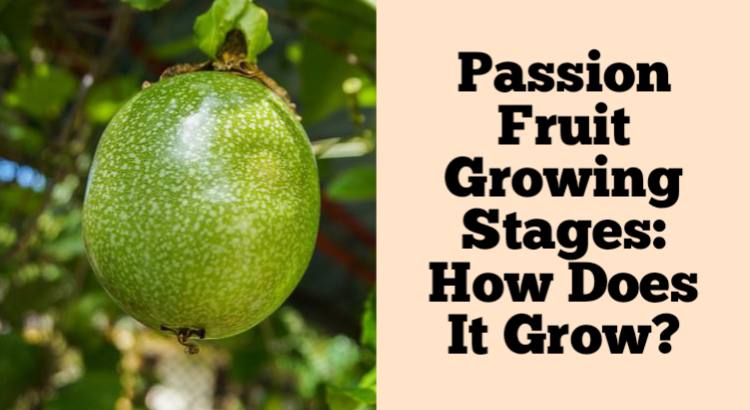Passion Fruit Growing Stages. Passion fruit is a tropical fruit that is native to South America. It can be found in many parts of the world and has become an important source of nutrition for countries in Central America, Southeast Asia, Africa, and other regions.
Passion fruit grows on large trees that can reach heights of up to 50 feet. The plant has multiple flowering flowers on long stalks. The red-orange colored fruits appear in clusters above the leaves and are usually harvested when they reach around 2 pounds each. But how does passion fruit grow?
Passion Fruit Growing Stages
Stage 1. Germination
Germination is the process of seed sprouting. The seed has its own unique characteristics, and each type needs to be cared for differently. This can be done with some experimentation, but there are some general guidelines to follow:
Prepare an environment where you want your growth to take place—this may be indoors or outdoors depending on what you’re growing.
Keep in mind that if you’re growing indoors, heat should not exceed 85 degrees Fahrenheit (29 Celsius).
If you want your plant to remain outside for an extended period of time, then keep its temperature between 40-50 degrees Fahrenheit (4-10 Celsius).
Select seeds from different varieties if possible so they will have different germination rates as well as grow well together once planted in the soil.
The ideal temperature range for most seeds is 70-85 degrees Fahrenheit during daytime hours; however, this varies depending on variety type/variety brand, etc.
Stage 2. Seedling
Seedling stage: This is a short period of time in the passion fruit flower cycle. During this stage, passion flowers are still young and fragile, so they are vulnerable to pests and diseases.
A passion fruit seedling is a young plant that has just germinated. It’s small and has no flowers or fruit. The seedling stage is the first stage of a plant’s life, after which it goes through several other stages before becoming a mature plant.
They should therefore be kept in a warm, humid environment with plenty of sunlight (for optimal photosynthesis). The seeds need regular watering during their first few weeks before planting them out into their permanent home.
The seedling must be watered regularly and kept cool. It’s best to keep it in a greenhouse at this point until new leaves appear.
In the nursery
In the nursery, seeds are planted in a nursery bed. This is where you’ll see your passion fruit plants grow for a few months before they’re ready to be transplanted out into the field.
Once your passion fruit plants have grown large enough, it’s time to begin training them up. You’ll need a few things: a soil conditioner (like Miracle-Gro), a watering cup or a watering can that has been primed with water and filled with cool water when needed.
Trellis system made from wire or wood (this will help support the branches as they grow); pruning shears or scissors; plant tag indicating what variety was used as well as information on how long ago it was purchased.
Stage 3. Growing After Field Transplanting
After the field transplanting, you will need to protect your passion fruit from pests and diseases. To do this:
Ensure that there is plenty of water available in the area where you plan to grow your passion fruit.
If there are none nearby, consider purchasing a rainwater tank or other type of water storage container which can be filled with water from time to time as needed during dry spells in order to keep pests away from your plants.
Make sure that all leaves on each plant have been cut off before planting them into their final positions so that not only this helps prevent disease spread.
It also aids in preventing evaporation from taking place which would otherwise cause leaf damage over time due to the lack of moisture level being maintained within each individual leaf.
During its life cycle period between two consecutive seasons where one might last for two weeks while another might last for three months without ever needing any additional intervention by humans involved whatsoever.
Stage 4. Flowering and Fruiting
The most important part of the passion fruit growing process is fruiting. This can take up to a year, but you should start seeing fruit produced by your plants after about 18-24 months.
The passion fruit is self-pollinating and it can pollinate its flower without cross-pollination. Also, even though it’s self-pollinating, pollinators like bees can still help pollinate the flowers.
When the fruits are brightly dark purple, orange, yellow, or red they can now be harvested. The fruits will have a good size when they mature.
Conclusion: Passion Fruit Growing Stages
In this document, we have outlined the various stages of passion fruit growing. It is important for you to take note of these stages as they will help you understand when your plants need attention and how far along they are.


